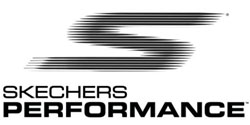News
News from Boulder, Colorado and Boulder Channel 1 News editors To advertise please call 303-447-8531
A new study names Boulder, Colo., home to the happiest people in the United States.
Nov 22nd
By Susan Page, USA TODAY
Feeling down? You might consider a move to Boulder, Colo.
A massive new study of Americans’ attitudes concludes that the city at the foot of the Rocky Mountains is home to the happiest, healthiest people in the United States. At the bottom of 162 large and medium-sized cities: Huntington, W.Va.
The Gallup-Healthways Well-Being Index, based on interviews with more than 353,000 Americans during 2009, asked individuals to assess their jobs, finances, physical health, emotional state of mind and communities.
CHECK THE INDEX: How does your city rank?
STATES: See how yours rates
POLITICS: See how your state leans
“Most of our highest-scoring cities are found out West and most of our lowest-scoring cities are in the South,” says research director Dan Witters. Wealthier communities typically score higher.
Residents of large cities — those with a population of 1 million or more — generally report higher levels of well-being and more optimism about the future than those in small or medium-sized cities. In small cities, at 250,000 or less, people are more likely to feel safe walking alone at night and have enough money for housing.
The study provides a city-by-city portrait of the nation’s mood and a potential tool for policymakers.
Nine of the 10 cities that fare best on “life evaluation,” assessments of life now and expectations in five years, boast a major university, a big military installation or a state Capitol — institutions that presumably provide some insulation from recession.
Overall, the top 10 cities include four in California, two in Utah and one each in Colorado and Hawaii. Of them, only the Holland, Mich., and Washington, D.C., metro areas are located in the Eastern or Central time zones.
Many of the bottom 10 are in economically embattled regions. Three are in the Alleghenies and three in the Rust Belt. Only Shreveport, La., and Modesto, Calif., are west of the Mississippi.
Boulder’s setting, including a greenbelt of public lands around the city, may help explain its top ranking, Mayor Susan Osborne says. “We tend to have lots of opportunities for being outside,” she says. The jobless rate is 5.7%, below the nation’s 9.7%.
In his annual “state of the city” address Saturday, Huntington Mayor Kim Wolfe said budget cuts and layoffs were needed for his city to deal with the economic downturn. The city’s jobless rate is 7.8%.
There are some places where people seem naturally upbeat. Baton Rouge is 44th overall, but in “life evaluation,” the Mississippi River city is first.
How does your city rank in well-being?
A city-by-city look at how Americans feel about their jobs, their health, their lives and their futures.
Source: Gallup-Healthways Well-Being Index, which included more than 353,000 landline and cellphone interviews in 2009. Margins of error range from 5 percentage points in the smallest cities to less than 1 point in the largest cities.
What each of the six indexes mean:
Life Evaluation: Personal assessments of one’s present life and life in five years, on a scale of 0 to 10.
Emotional Health: Measures a composite of respondents’ daily experiences, including laughter, happiness, worry, anger and stress.
Work Environment: Measures job satisfaction, ability to use one’s strengths at work, trust and openness in the workplace and whether one’s supervisor treats him or her more like a boss or a partner.
Physical Health: Measures chronic diseases, sick days, physical pain, daily energy and other aspects of physical health.
Healthy Behaviors: Measures smoking, consumption of fruit and vegetables and exercise.
Basic Access: Measures basic needs optimal for a healthy life, such as access to food and medicine, having health insurance and feeling safe while walking at night.
READERS: Were you surprised by your city’s rank/result
OSMP needs raptor monitors for next season
Nov 19th






















Boulder County Accepting Comments on Stream Restoration Project
Nov 23rd
Posted by Channel 1 Networks in Environmental News
1 comment
Parks and Open Space and the Corps and will also host a public meeting on December 15 at the Boulder County Recycling Center (1901 63rd St., Boulder) from 5:30 p.m. to 7:30 p.m. A formal presentation will take place at 6:30 p.m. and public comment will be recorded.
The Lower Boulder Creek Aquatic Ecosystem Restoration Project is a joint endeavor with Parks and Open Space and the Army Corps of Engineers. The project is led by the Corps and involves approximately a one-mile reach of Lower Boulder Creek. Parks and Open Space has been working with the Corps on the planning for the project since 2002.
Under Section 206 of the Water Resources Development Act of 1996, the Corps can undertake restoration projects in aquatic ecosystems, such as rivers, lakes, and wetlands, with a non-federal sponsor, such as Boulder County. The program provides up to $5 million in federal funding based on a 65% federal / 35% local sponsor cost-sharing agreement.
To learn more about Parks and Open Space’s involvement in the project and to submit comments, visit www.BoulderCountyOpenSpace.org or contact the project planner, Ernst Strenge, at 303-678-6269 or LBC@bouldercounty.org.
To find out more about the Corps’ draft Detailed Project Report and Environmental Assessment, and to provide comments to the Corps about the project itself, visit the Corps’ website at: